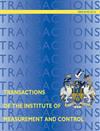基于考虑虚拟目标点的人工势场方法的无人水面车路径规划
IF 1.7
4区 计算机科学
Q3 AUTOMATION & CONTROL SYSTEMS
Transactions of the Institute of Measurement and Control
Pub Date : 2023-08-07
DOI:10.1177/01423312231190208
引用次数: 1
摘要
针对无人水面车路径规划中的局部极小问题和目标不可达问题,提出了一种考虑虚拟目标点的无人水面车的路径规划算法。对于目标不可达问题,建立了排斥力势场函数。根据测量到的目标与障碍物之间的距离,目标的排斥力为零,从而使USV能够到达目标点。对于局部极小值问题,分析了各种障碍物引起的局部极小值,将模拟退火(SA)和人工势场方法(APFA)相结合,解决了一般障碍物造成的极小点问题。针对特殊U形障碍物引起的局部极小问题,建立了虚拟目标点算法(VTPA)来解决该问题。仿真结果证明,该算法解决了由于排斥力过大导致路径过长的问题。与双树快速探索随机树(DT-RRT)算法相比,该算法的效率有了显著提高。算法运行时间减少了33.4%,路径长度减少了17.8%,不仅节省了时间,而且优化了路径规划,加快了算法的速度。本文章由计算机程序翻译,如有差异,请以英文原文为准。
Path planning of unmanned surface vehicle based on artificial potential field approach considering virtual target points
Aiming at the local minimum problem and target unreachable problems in the path planning of unmanned surface vehicle (USV), a path planning algorithm of USV considering virtual target point is proposed. For the target unreachable problem, a repulsive force potential field function is created. According to the measured distance between the target and the obstacle, the repulsive force of the target is zero, so that the USV can reach the target point. For the local minimum problem, the local minimum caused by various obstacles is analyzed, simulated annealing (SA) and artificial potential field approach (APFA) are combined to solve the minimum point problem caused by general obstacles. For the local minimum problem caused by special U-shaped obstacles, a virtual target point algorithm (VTPA) is established to solve this problem. The simulation results prove that this algorithm solves the problem of long path caused by too large repulsive force. Compared with Dual-Tree Rapidly exploring Random Tree (DT-RRT) algorithm, the efficiency of this algorithm has been significantly improved. Algorithm running time was reduced by 33.4%. Path length was reduced by 17.8%. Not only the time is saved, but also the path planning is optimized, so that the speed of the algorithm is accelerated.
求助全文
通过发布文献求助,成功后即可免费获取论文全文。
去求助
来源期刊
CiteScore
4.10
自引率
16.70%
发文量
203
审稿时长
3.4 months
期刊介绍:
Transactions of the Institute of Measurement and Control is a fully peer-reviewed international journal. The journal covers all areas of applications in instrumentation and control. Its scope encompasses cutting-edge research and development, education and industrial applications.

 求助内容:
求助内容: 应助结果提醒方式:
应助结果提醒方式:


